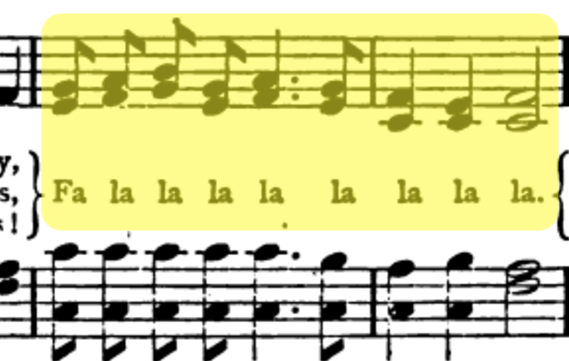Fa, la, la, la, la, la, la, la, la!
Christmas is right around the corner.
The air feels more crisp. There’s an understanding that work slows down, that students and children come home for the holidays. There’s a priority on time with family and friends, to catch up and reminesce on what has happened the past year.
Bright red and green coloured lights are neatly strung along the outlines of homes.
Holiday jingles bombard the airwaves, playing nonstop until the 25th.
Iconic lyrics and distinct voices monopolize the Christmas tunes. We’re talking Mariah Carey, Michael Bublé and the like.
🎵Fa, la, la, la, la, la, la, la, la!🎵
An iconic verse from From Deck The Halls, it is unmistakenably recognizeable.
And to me, it perfectly highlights the importance and distinct feature of English beyond the simple pronunciation or articulation of the sound.
There are 8 La’s but we don’t actually pronounce them all the same.
Some are higher pitch, some are sung for a longer time.
But we somehow represent them the same way - La.
And yet, everyone reading them in their minds can figure out the nuanced difference. Everyone can somehow hum the same tune when reading those 8 La’s.
Understanding that all of English speech has these unwritten rules for pronunciation, including pitch, vowel length, and loudness, is a skill.
Knowing that these component features adjust according to the intended stress of a sentence or verse in this case, is a skill.
Generalize that to all of English speech and you start to understand the complexity that native English speakers communicate with, that perhaps non-native English speakers don’t realize.
Why does the preface or suffix in words change the pronunciation.
Why does photograph sound different from photography with the -y at the end?
Why does equal sound different from equality with the -ity at the end?
Well, the suffixes change the pronunciation even though the letters are same. The pronunciation changes because the stressed vowel is different. The stressed vowel is denoted by a change in vowel pitch, loudness and vowel length, just like in singing “Fa, la, la, la, la, la, la, la, la”
Let’s look at the lyrics a bit more closely.
Notice how the pitch changes on the sheet music.
Notice the rising pitch from Fa-La-La, before it drops again for the subsequent La-La. Notice how the 4th La is held for a longer durration. Notice how the 5th to 8th La’s are lower pitch. How the final 3 La’s are longerr in duration. How the final La is the longest in duration.
The sheet music for the song reveals all of this to us.
But the English language doesn’t have a succinct way of revealing that to us. Instead, it’s expected that you automatically know those rules and apply them yourself. Instead, the English language gives you the bare minimum in terms of symbols. Just the spelling - the basic blueprint.
You have to apply the intonation, the vowel length. It highlights the importance of understanding that there is a lot of underlying information in English speech.
Singing and rhyming is an extremely helpful way to learning pitch changes and intonational changes because they provide extra information. This is exactly why nursery rhymes and children’s books are helpful when kids are learning their first English language books. They make the intonational changes extremely obvious and clear.
So the next time you hum your favourite English song or jingle, pay attention to the vowel stress, the pitch changes and the tune. It may reveal more to you than you first realized.
Happy holidays!


